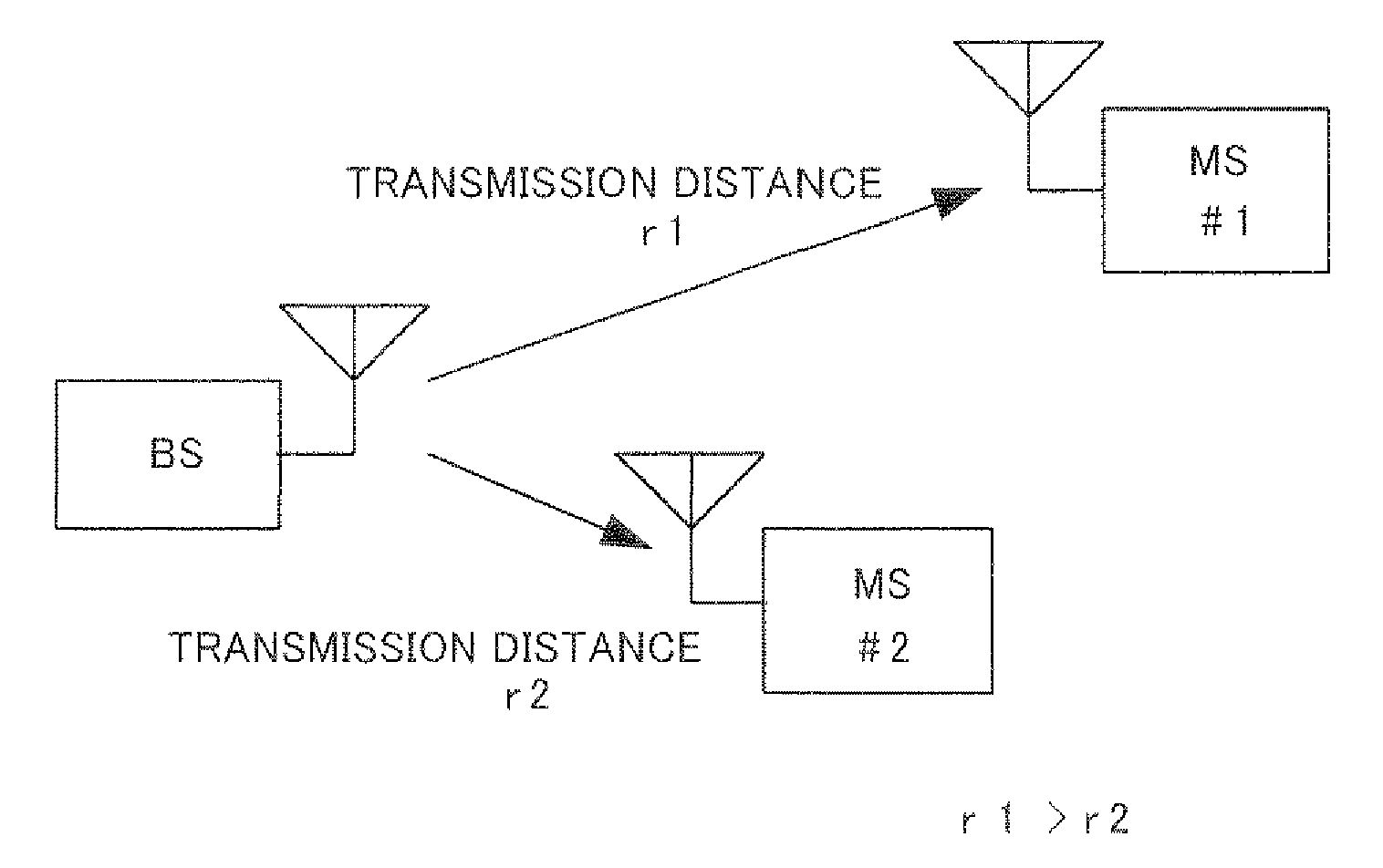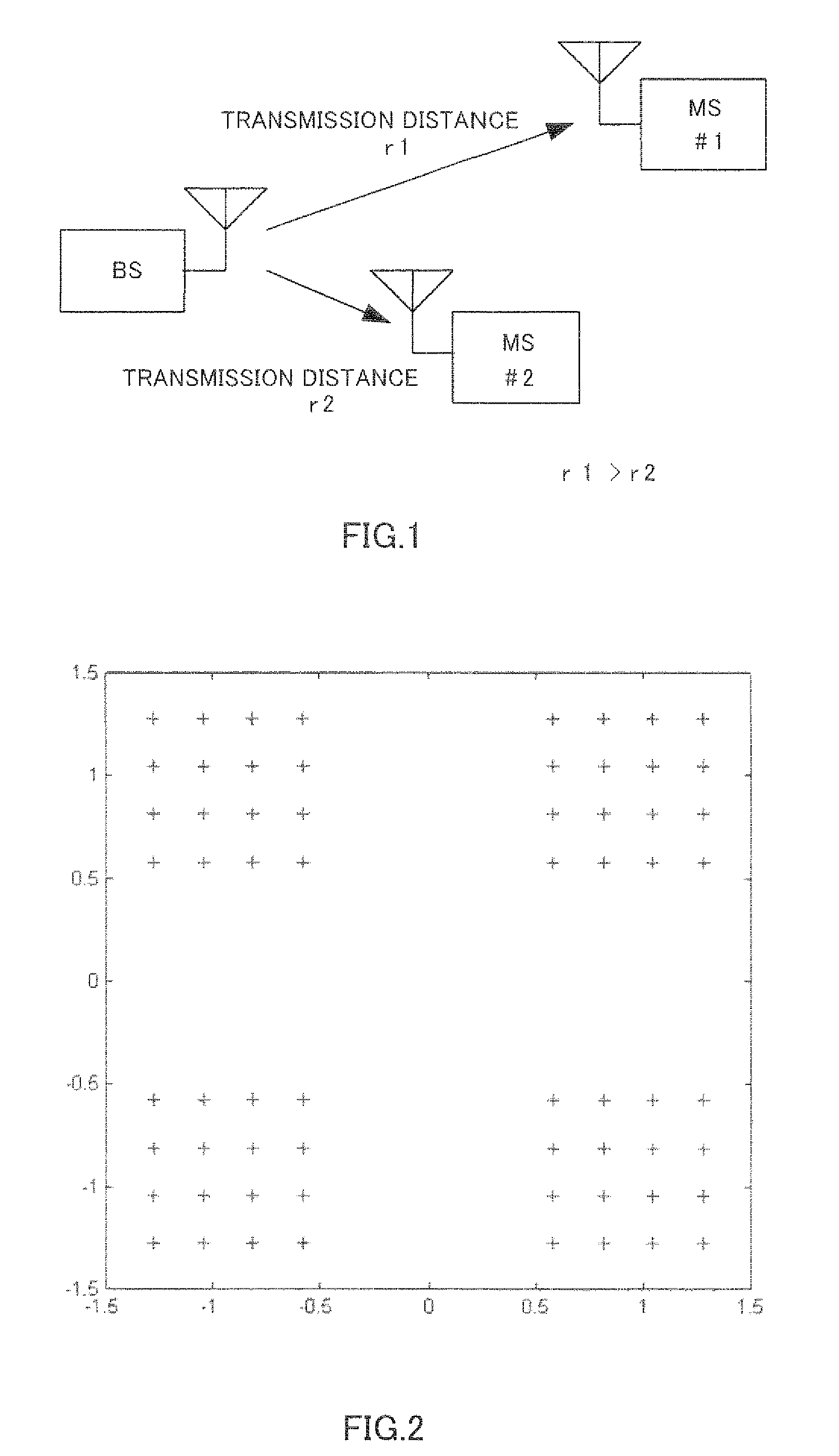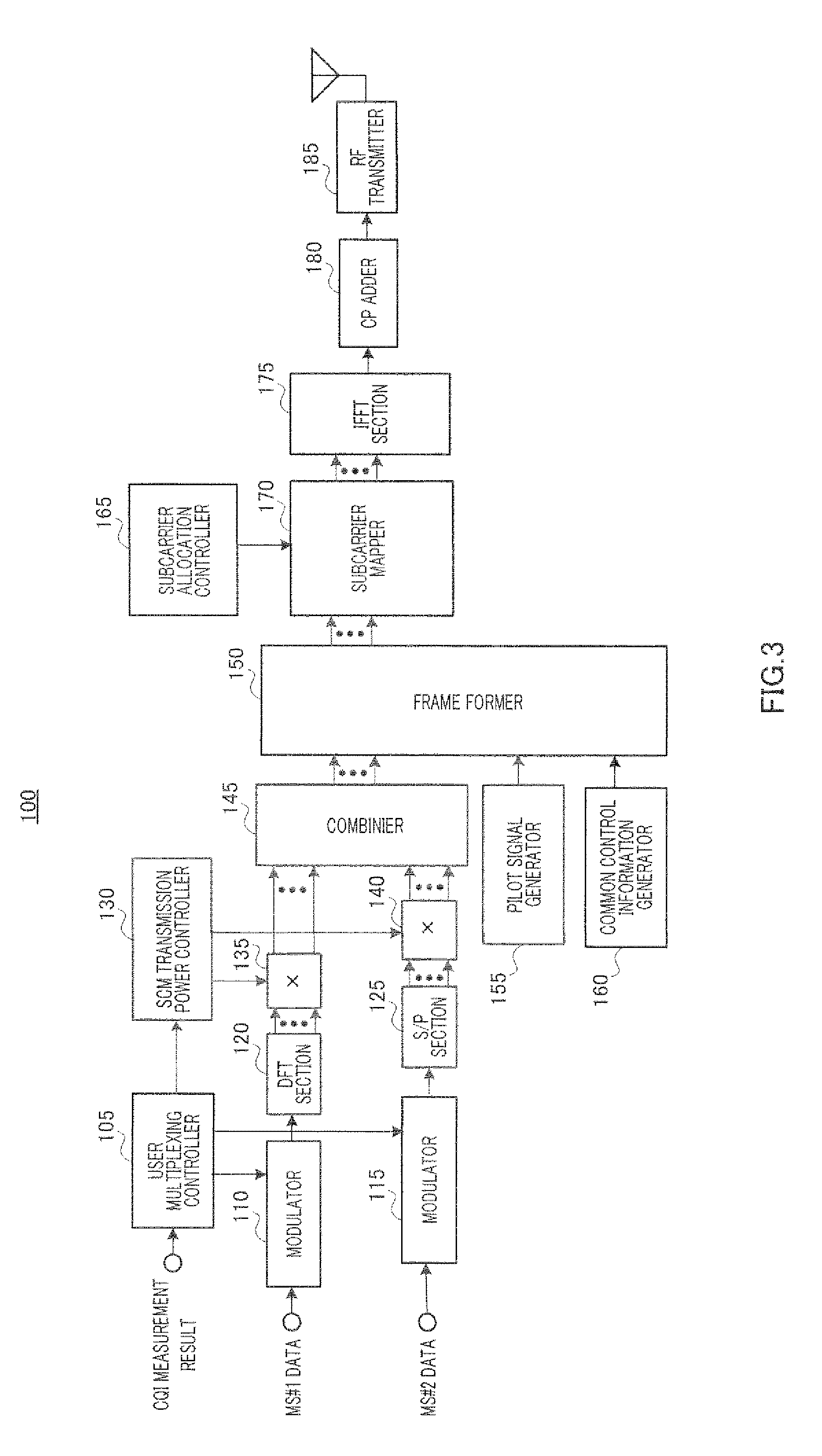Multicarrier transmitter and multicarrier receiver
a multi-carrier transmitter and receiver technology, applied in power management, orthogonal multiplex, polarisation/directional diversity, etc., can solve problems such as deterioration in reception performance, and achieve the effect of improving the reception performance in hierarchical modulation multiplexing communication
- Summary
- Abstract
- Description
- Claims
- Application Information
AI Technical Summary
Benefits of technology
Problems solved by technology
Method used
Image
Examples
embodiment 1
[0047]As shown in FIG. 3, base station apparatus 100 that is a multicarrier transmitting apparatus according to the present embodiment has user multiplexing controller 105, modulator 110, modulator 115, DFT (Discrete Fourier Transform) section 120, S / P section 125, SCM transmission power controller 130, multiplier 135, multiplier 140, combiner 145, frame former 150, pilot signal generator 155, common control information generator 160, subcarrier allocation controller 165, subcarrier mapper 170, IFFT section 175, CP adder 180 and RF transmitter 185.
[0048]Further, FIG. 3 shows the configuration of base station apparatus 100 in case where OFDMA is applied. Hereinafter, a case will be explained where SCM transmission is performed using N1 subcarriers. Here, in case where N_FFT is assumed to be the FFT size in the IFFT (Inverse Fast Fourier Transform) section, the relationship N1≧N_FFT holds.
[0049]Based on CQI (Channel Quality Information) which is the measurement result of channel quali...
embodiment 2
[0140]The present embodiment is the same as Embodiment 1 in transmitting a signal in which a second modulated signal is superimposed as is as a time domain signal upon a plurality of frequency components into which a first modulated signal is divided in the frequency domain on a per symbol basis. However, while, with Embodiment 1, the first modulated signal and the second modulated signal are addressed to the distant user and nearby user, respectively, with the present embodiment, the first modulated signal and second modulated signal are addressed to the nearby user and distant user, respectively.
[0141]That is, the base station apparatus according to the present embodiment has the same configuration as base station apparatus 100 shown in FIG. 3. However, modulator 110, DFT section 120 and multiplier 135 process signals addressed to the nearby user, and modulator 115, S / P section 125 and multiplier 140 process signals addressed to the distant user. Therefore, transmission power coef...
embodiment 3
[0172]FIG. 11 is a block diagram showing a configuration of base station apparatus 600 that is a multicarrier transmitting apparatus according to Embodiment 3. Similar to base station apparatus 100, base station apparatus 600 transmits a signal in which the second modulated signal is superimposed as is as a time domain signal upon a plurality of frequency components into which the first modulated signal is divided in the frequency domain on a per symbol basis.
[0173]Note that, as shown in FIG. 11, base station apparatus 600 differs from base station apparatus 100 in the configuration as follows. That is, base station apparatus 600 has: DFT output power measurer 610 that measures amplitudes of subcarriers outputted from DFT section 120 every predetermined subcarrier blocks for a predetermined period; subcarrier mapping determiner 620 that determines subcarriers to map output modulated signals acquired by modulating outputs of DFT section 120 based on the outputs of DFT output power me...
PUM
 Login to View More
Login to View More Abstract
Description
Claims
Application Information
 Login to View More
Login to View More - R&D
- Intellectual Property
- Life Sciences
- Materials
- Tech Scout
- Unparalleled Data Quality
- Higher Quality Content
- 60% Fewer Hallucinations
Browse by: Latest US Patents, China's latest patents, Technical Efficacy Thesaurus, Application Domain, Technology Topic, Popular Technical Reports.
© 2025 PatSnap. All rights reserved.Legal|Privacy policy|Modern Slavery Act Transparency Statement|Sitemap|About US| Contact US: help@patsnap.com



